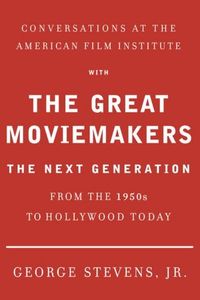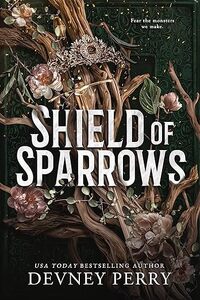

Purchase
The Great Moviemakers: The Next Generation
George Stevens Jr.
From the 1950s to Today
Conversations At The American Film Institute
Knopf
April 2012
On Sale: April 3, 2012
737 pages
ISBN: 0307273474
EAN: 9780307273475
Kindle: B005O1BYVE
Hardcover / e-Book
Add to Wish List
Non-Fiction
A companion volume to George Stevens, Jr.’s, much admired
book of American Film Institute seminars with the great
pioneering moviemakers (“Invaluable”—Martin Scorsese). Those represented here—directors, producers, writers,
actors, cameramen, composers, editors—are men and women
working in pictures, beginning in 1950, when the studio
system was collapsing and people could no longer depend on,
or were bound by, the structure of studio life to make movies. Here also are those who began to work long after the studio
days were over—Robert Altman, David Lynch, Steven Spielberg,
among them—who talk about how they came to make movies on
their own. Some—like Peter Bogdanovich, Nora Ephron, Sydney
Pollack, François Truffaut—talk about how they were
influenced by the iconic pictures of the great pioneer
filmmakers. Others talk about how they set out to forge
their own paths—John Sayles, Roger Corman, George Lucas, et al. In this series of conversations held at the American Film
Institute, all aspects of their work are discussed. Here is
Arthur Penn, who began in the early 1950s in New York with
live TV, directing people like Kim Stanley and such live
shows as Playhouse 90, and on Broadway, directing
Two for the Seesaw and The Miracle Worker,
before going on to Hollywood and directing Mickey One
and Bonnie and Clyde, among other pictures, talking
about working within the system. (“When we finished
Bonnie and Clyde,” says Penn, “the film was
characterized rather elegantly by one of the leading Warner
executives as a 'piece of shit' . . . It wasn’t until the
picture had an identity and a life of its own that the
studio acknowledged it was a legitimate child of the Warner
Bros. operation.”) Here in conversation is Sidney Poitier, who grew up on an
island without paved roads, stores, or telephones, and who
was later taught English without a Caribbean accent by a
Jewish waiter, talking about working as a janitor at the
American Negro Theater in exchange for acting lessons and
about Hollywood: It “never really had much of a conscience .
. . This town never was infected by that kind of goodness.” Here, too, is Meryl Streep, America’s premier actress, who
began her career in Julia in 1977, and thirty odd
years later, at sixty, was staring in The Iron Lady,
defying all the rules about “term limits” and a filmmaking
climate tyrannized by the male adolescent demographic . . .
Streep on making her first picture, and how Jane Fonda took
her under her wing (“That little line on the floor,” Fonda
warned Streep, “don’t look at it, that’s where your toes are
supposed to be. And that’s how you’ll be in the movie. If
they’re not there, you won’t be in the movie”). Streep on
the characters she chooses to play: “I like to defend
characters that would otherwise be misconstrued or
misunderstood.”
The Next Generation is a fascinating revelation of
the art of making pictures.
Conversations at the American Film Institute
Comments
No comments posted.
Registered users may leave comments.
Log in or register now!
| 


 © 2003-2025 off-the-edge.net
all rights reserved Privacy Policy
© 2003-2025 off-the-edge.net
all rights reserved Privacy Policy